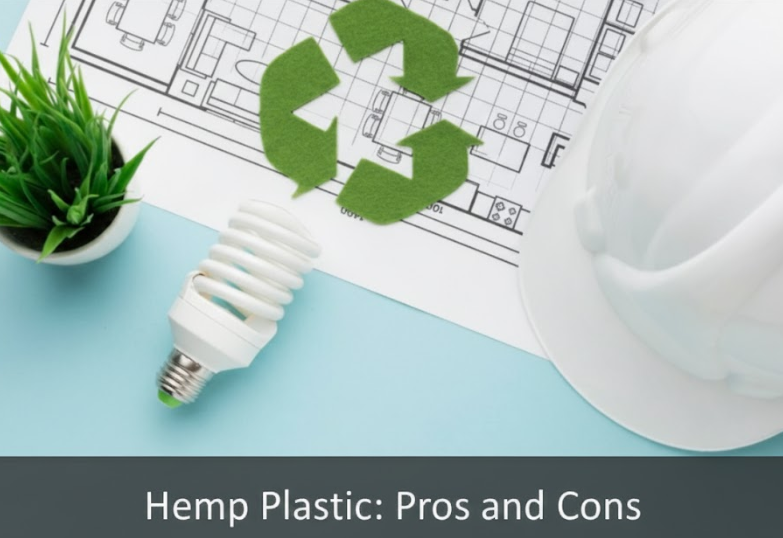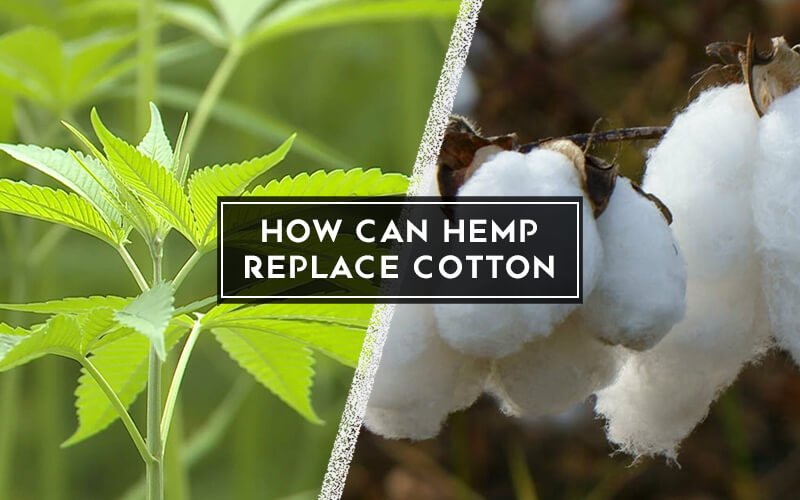Hemp Plastic: Pros and Cons Explained in Plain English
Every few decades, the world rediscovers hemp.
Once used for rope, paper, sails, and even early car parts, hemp has always been one of nature’s most versatile raw materials.
In 1941, Henry Ford built a car prototype with panels reinforced by hemp fibre. It was a bold attempt to prove that natural materials could be stronger, lighter, and more sustainable than steel or oil-based plastics.
That idea faded as the petroleum era took over.
Fossil fuels became cheap, abundant, and politically protected, and they pushed hemp out of industry for nearly eighty years.
But now, as the world races to cut plastic waste and carbon emissions, hemp is back in the spotlight.
Its potential lies in something simple but powerful: cellulose.
Industrial hemp is packed with it, and cellulose is the basic building block of most plastics.
With the right processing, we can turn hemp into bioplastics.
The result is a material that’s renewable, compostable under the right conditions, and capable of reducing dependence on fossil fuels.
So the question is – could hemp finally fulfil the promise Henry Ford once saw?
In this article, we’ll look at:
- Whether hemp can realistically replace traditional plastics
- The key pros and cons of hemp-based materials
- And the future potential of hemp plastics in global manufacturing.
Let’s explore this together, step by step.
Why is hemp plastic gaining global attention?
The fact that we can use hemp to make plastic is gaining momentum at a time when the world is under pressure for a plastic alternative.
Momentum around hemp bioplastics isn’t just theoretical.
It’s being built in factories, farms, and policy circles across the world.
We’ve seen this firsthand. In country after country, from the U.S. to Germany to India, manufacturers and innovators are realizing that industrial hemp benefits are a rare combination of:
- high cellulose content (up to 70% in stalks),
- fast growth cycles (3–4 months per harvest), and
- non-toxicity across its lifecycle.
At the same time, many sectors are looking for scalable alternatives to traditional plastic.
Industries using hemp plastic today include:
- Automotive: BMW and Mercedes-Benz use hemp-reinforced panels to cut weight and improve sustainability.
- Consumer packaging: Hemp Foundation in the USA is reimagining the use of traditional plastic under hemp plastic products across a wide section.
- Lifestyle products: Sunglasses, phone cases, and furniture made from hemp composites are entering premium and niche markets.
Globally, the hemp-based packaging market alone is expected to grow from $237 million in 2024 to $756 million by 2034.
In short, hemp plastic uses are no longer experimental. They’re growing, and fast, as industries realign around climate, circularity, and renewable feedstocks.
So let’s first look at the pros of hemp plastic as we next get into the hemp plastic pros and cons.
What are the main benefits of hemp plastic?
Source: Designed by Freepik
The benefits of hemp plastic go deeper than just being “plant-based.”
Let’s break it down.
1. It Can Be Biodegradable
Depending on how it’s made, biodegradable hemp plastic can break down in a matter of months under industrial composting. This is a big shift from petroleum plastics that linger for hundreds of years.
Some blends, particularly those with hemp fiber and PLA, fully decompose within 6–9 months under the right conditions. That means less landfill, fewer microplastics, and cleaner oceans.
2. It’s Part Of A Regenerative Farm Economy
Every time a farmer harvests hemp for oil or fiber, the leftover stalks are often discarded or burned. Hemp bioplastics put those leftovers to work.
That means:
- a new market for agricultural waste,
- extra income for farmers,
- and less biomass being wasted or incinerated.
3. It Performs Well
Hemp fibers are lightweight and strong. In automotive settings, they’re replacing glass fiber in panels to reduce weight and improve fuel economy.
4. It Stores Carbon
Industrial hemp captures about 1.6 tons of CO₂ per ton grown. That means hemp plastic starts with a climate-positive baseline. On the other hand, petro-plastic begins by extracting carbon from deep underground.
5. It’s Flexible
You can make rigid packaging, compostable films, molded utensils, and more, all from hemp-based materials. It’s not a single-use concept. It’s a platform.
But as with any material, the story doesn’t stop at the benefits. So next in hemp plastic pros and cons, let’s see where the challenges lie.
What are the challenges and limitations of hemp plastic?
The challenges of hemp plastic matter, especially if we’re trying to scale the material responsibly.
Here’s what we’re navigating right now.
1. Cost
Is hemp plastic expensive? It is, but currently.
Hemp plastic cost is 2–4 times higher than common plastics like polypropylene (PP). This is mostly due to:
- the early stage of global supply chains,
- the limited number of fiber-grade hemp processors, and
- the need for large-scale material refinement.
We’re closing that gap, but cost remains a key barrier for brands operating on tight margins.
2. Infrastructure
We don’t just need more hemp. We need:
- more decorticators (machines that separate fiber),
- better extraction for high-purity cellulose,
- and affordable logistics to move bulk agricultural feedstock.
Many countries, including the U.S., are still building this foundational layer.
3. End-Of-Life Issues
Many hemp plastics are compostable, but only in industrial composters. Home composting isn’t always enough. Worse, if they end up in plastic recycling bins, they can contaminate the stream, a common issue for recycling hemp bioplastic.
4. Regulatory Uncertainty
Certifications like ASTM D6400 or EN13432 exist for compostability, but they’re not consistently enforced. Some products are labeled “biodegradable” without meeting the standards.
We need tighter norms, better labeling, and more honest marketing.
Despite these roadblocks, the direction is clear. Progress is happening in industrial hemp production, and the next chapter is already unfolding.
What is the future of hemp plastic?
The future of hemp plastic is being shaped by three forces: regulation, technology, and scale.
Regulation
Regulations are about aligning with climate goals.
Let’s look at the prevailing regulations in major regions with prominent enforcement.
- In Europe, all packaging must be recyclable or compostable by 2030.
- U.S. states like California and Washington are introducing extended producer responsibility (EPR) laws that favor compostable materials.
Technology
Technology is accelerating.
New hemp-based formulations are achieving:
- improved moisture resistance,
- shelf-stable properties,
- and even home compostability.
At Hemp Foundation, we’re working on hemp-based bio-additives that improve strength, UV resistance, and compatibility with injection molding. This is being done using existing manufacturing infrastructure.
Scale
The answer to “Can hemp replace plastic?” is a full-fledged yes, only when scaling is encouraged. And what’s the good news? Scaling is happening and projected to grow positively.
The global hemp plastic market forecast shows packaging alone tripling by 2034. Meanwhile, investors are putting money into hemp processing hubs, and big brands are asking real questions about sourcing and emissions.
And the most exciting part? We’re still in the early innings.
As these pieces align—better raw material access, clearer policy, and smarter tech—hemp bioplastics can become a mainstream material class.
But that depends on how we respond today.
Final thoughts
Now that we have seen the hemp plastic pros and cons and its potential future, we come to an interesting question: Is hemp plastic sustainable enough to replace fossil plastics?
The answer is, it has a clear and powerful role to play as part of a larger system of sustainable plastic alternatives.
It connects farmers, manufacturers, and policymakers in a shared effort to:
- reduce plastic pollution,
- build circular economies,
- and regenerate the land we rely on.
We briefly saw its visible impact in packaging, in automotive parts, and in the thousands of tons of waste it could prevent.
Hemp bioplastics are not just an innovation but a transition technology. A bridge from extractive materials to regenerative ones. A way to rethink how we make things.
The challenges, like cost, infrastructure, and standardization, are exactly the type that systematic investment and supportive policy can address.
The key now is collaboration between growers, researchers, companies, and regulators.
Also, to ensure the removal of the friction and bring the material to scale.
Because the need is clear.
And the opportunity is growing.
FAQs
What Are The Disadvantages Of Hemp Plastic?
Hemp plastic, though eco-friendly, faces cost, composting, and supply-chain hurdles before it can scale industry-wide.
How Long Does Hemp Plastic Last?
In controlled composting, it breaks down in 3–6 months. In dry indoor use, it can last for years without structural damage.
Is Hemp Plastic Biodegradable?
Yes, under proper industrial composting, hemp plastic can fully decompose into organic matter without leaving toxins.
Is Hemp Plastic Stronger Than Regular Plastic?
Yes. Hemp-reinforced plastics can be 3–5 times more durable and stiffer than petroleum-based plastics. This is especially true in molded components.
Can Hemp Plastic Be Used For Food Packaging?
Yes, but only if certified. Food-grade hemp plastics must meet safety and compostability standards to be approved for contact use.
Vishal Vivek
Vishal Vivek is the Founder and CEO of Ukhi, a pioneering bio-materials company dedicated to ending plastic pollution by converting agricultural waste into high-performance compostable polymers. With a background in sustainable entrepreneurship and over a decade of technology experience, he leads Ukhi’s vision to create scalable, planet-positive material solutions. Previously, Vishal founded the Hemp Foundation, where he empowered more than 1,000 farmers and advanced sustainable livelihood initiatives. His work has been recognized through awards such as the HDFC Parivartan Grant and featured in leading publications like Forbes and Entrepreneur. Times Group recognized him as a legendary entrepreneur and published his biography in “I Did IT- Vol 2” alongside social pioneers like Bindeshwar Pathak (Sulabh International) and Anshu Gupta (Goonj). Vishal has authored more than 200 articles on sustainability and hemp, reflecting his deep expertise and advocacy for regenerative solutions. His commitment to grassroots impact led him to live in the remote mountains of Uttarakhand, where he immersed himself in the lives of marginal farmers, understanding their challenges and co-creating economic opportunities through hemp-based initiatives. A deeply passionate innovator, Vishal often draws inspiration from seemingly impossible achievements: “If Elon Musk can make rockets reusable, or Dashrath Manjhi can carve a path through a mountain with rudimentary tools, why can’t we eliminate the demon of single-use plastic while uplifting struggling farmers? We will make it happen—whatever it takes.” Ukhi is proud to be supported by premier institutions including IIT Guwahati, NSRCEL-IIM Bangalore, Indian School of Business (Hyderabad), Indian Council of Agricultural Research (ICAR Pusa), and the Indian Institute of Packaging. Vishal is committed to demonstrating that business can be a powerful catalyst for global environmental and social good. Connect with Vishal Vivek
Related Posts
Everything You Want to Know about Nutritional Profile of Hemp Seed Oil
Q1: How much oil content does hemp seeds have? Does the proportion depend upon the extraction proces
Can Hemp Replace Cotton?
[vc_row][vc_column][vc_column_text]It’s only pertinent that before we get down and dirty in the he
Helping Farmers
Augmenting Farmers’ Income Through Hemp Cultivation The state of Uttarakhand experienced remarkabl




